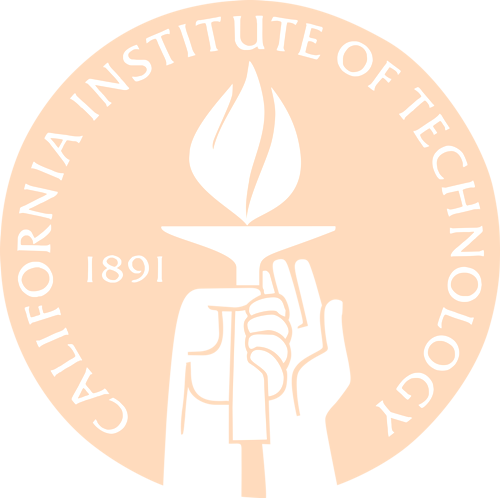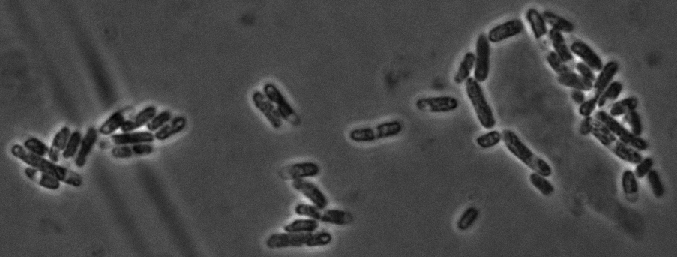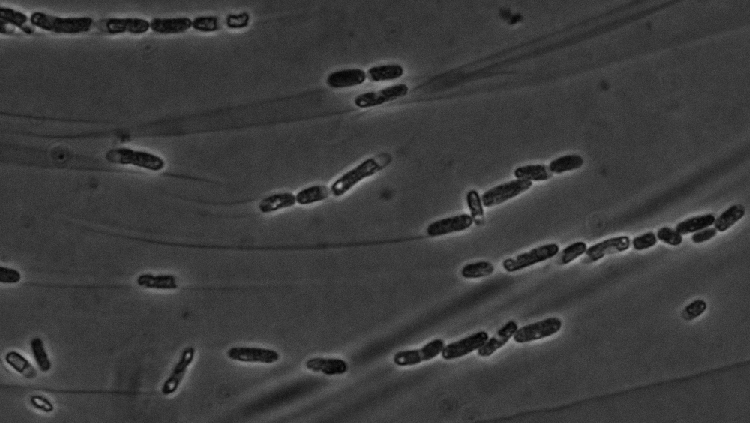Team:Caltech/BBa K338004
From 2010.igem.org
| Line 21: | Line 21: | ||
Although not a finished product, it was tested in DH5α cells grown in 5mM glucose for 48 hours (5mL LB culture) at 37°C. The cells were then imaged at 100x, producing the following figures: | Although not a finished product, it was tested in DH5α cells grown in 5mM glucose for 48 hours (5mL LB culture) at 37°C. The cells were then imaged at 100x, producing the following figures: | ||
| + | [[Image:CaltechPlastic1.jpg]] | ||
| + | [[Image:CaltechPlastic2.jpg]] | ||
| + | |||
| + | The small inclusion bodies suggest the production of an unknown, but possibly plastic-related, substance. | ||
| - | |||
| | ||
}} | }} | ||
Revision as of 12:04, 26 October 2010
|
People
|
<partinfo>BBa_K338004 short</partinfo> This is half of a planned part which would contain all three PHA synthase genes required to produce [http://en.wikipedia.org/wiki/Polyhydroxybutyrate polyhydroxybutyrate] (PHB) in cells: phaA, phaB1, phaC1. This half contains phaB1 and phaC1: <partinfo>BBa_K156013</partinfo> & <partinfo>BBa_K156014</partinfo>. It was designed to be ligated downstream of part BBa_K338003. Usage and BiologyDesignWhen ligated downstream of BBa_K338003, the completed construct was designed to express all three PHA synthase genes required to make PHB oligomers from soybean oil. The three genes would be transcribed polycistronically on a single mRNA transcript under the IPTG-inducible control of the <partinfo>BBa_K215000</partinfo> promoter. Naturally, each gene is preceded by a standard RBS (<partinfo>B0034</partinfo>) and the transcript finishes with a strong terminator (<partinfo>B0015</partinfo>), for a total size of about 3500bp. Note that these three genes should only cause the production of PHB oligomers in cells, not hardened plastic. A crosslinking agent is required to link the oligomers and form the final plastic product. Over-expression of the phaC1 gene could cause some crosslinking, but this has not been experimentally verified. LiteratureSY Lee describes how a similar gene construct (pSYL105) was used to produce very large amounts of PHB, up to 80-90% of the dry cell weight, under certain conditions. Synthesis of PHB is related to the amount of acetyl-CoA available - synthesis was bolstered in the presence of complex nitrogen sources, amino acids, or oleic acid. He also mentions that PHB production was highly dependent on the particular bacterial strain used. [10] CharacterizationAlthough not a finished product, it was tested in DH5α cells grown in 5mM glucose for 48 hours (5mL LB culture) at 37°C. The cells were then imaged at 100x, producing the following figures: The small inclusion bodies suggest the production of an unknown, but possibly plastic-related, substance.
|
 "
"


